Texting Fever
by Laur M. Jackson
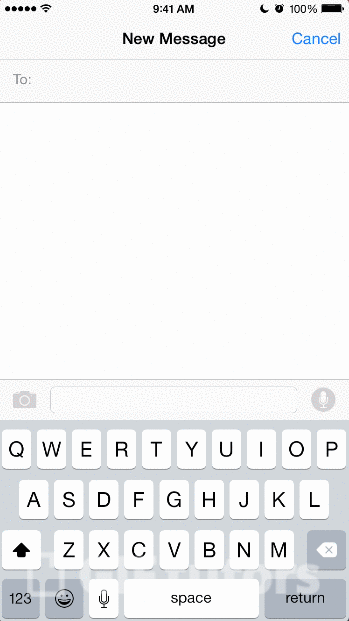
My personal brand of drunk texting is not the fun, flirtatious, or literacy-adjacent kind. More the scathing, revelatory, mean kind. I very very very very rarely (actually, only once) delete these messages post-incident.
Why?
The short answer: so far it’s the closest I’ve found to maintaining some modicum of editorial control over my own archive. The long answer is as follows.
(i)Message time
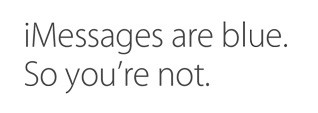
My favorite thing about iMessage is its insistence that it’s a living medium. Its selling point over other apparently antiquary message forms relies on mastery over communicative temporality. “Unlimited texting. Unlimited fun” the Apple.com headline promises, baldly appropriating an eternality that imagines immediacy as the solution of all of life’s problems. iMessage’s marketed features — group messaging, read receipts, typing notification (aka the ellipses of suspense) — pit us against oh-so-sticky compulsive sociality. iMessage is not the carrot dangled by Apple, but the blinders lovingly fitted for a vision of human interaction left wanting for an inability to be “real time” communicators. The carrot then is the prospect that we can be allied with our own obligatory social impetuses — that we can make friends with FOMO.
The logic is reflexive. Communicativity as time equals fun. Satisfaction and happiness thus relies not only on constant accessibility to others’ conversation, but the actual maximum fulfillment of the technological capabilities. It’s all free,* so the difference between sending 10 messages or 2 shouldn’t matter; thus, the goal becomes infinity messages, which deflates the unhappy futurity of FOMO by redirecting its apprehensions to the present. Nonresponse is that much more devastating.
In iMessage time, to “miss a beat” — or to fail to keep another individual abreast of what-now — is social self-destruction. And in iMessage, what could signify death better than that abrupt sight of green? A device turned off, out of power, or ineligible — illegible — for the language of iMessage hypermediated immediacy.
The Archive.

It seems significant that despite the many features multiplied across several schools of messaging applications (GroupMe, WhatsApp, Messenger, etc.), “undo”/“unsend” is still absent, so consistently that questions about it assume a kind of absurdity. The frustration and desire for an “undo” capability is produced by an infrastructure that such a feature would undermine. In the words of Chris Rock, “That’s like Cadillac making a car that lasts for fifty years… and you know they can do it!” Indeed, “we have the technology,” but if the identity of these applications hinges upon (the fiction of) immediacy as sociality… “undo” is damn near sacrilegious. A threat to the Archive as monolith, uniplanar, progressive, omniscient, organized, and a Power unto itself. So as users we move to the next best option: deletion.
Because as familiar as we are with its incapabilities and failures at true (whatever that might mean) erasure (for better: hello, recovered Word doc!; and worse: hello, decade-old nudes!), deleting messages in its own way still feels curiously close to an undo: the pleasure in pressing the “Delete Message(s)” command followed by elation as the offending passage slides away into almost-never-have-existed. And better yet, the feeling as a renewed conversation — assuming, ha, that you are still in contact with the person — quite literally slots in where the old messages would have been, retroactively stitched to earlier presumably inoffensive messages to together compose a glorious stream of un-hysterical correspondence. Deletion rubs regret out. (That then makes the flipside, er, something like edge play?)
Somewhat akin to what Spotify product technologist (what) Matthew Ogle observes but does not interrogate in his love letter to the “real-time web”-as-self-archiving-architecture, holding onto my textual blunders is partially about injecting knowability into a situation that is neither contained nor yet available for analysis. If History knowingly operates in the “syntax of the fairytale,” according to Carolyn Steedman, the desire to keep versus delete these digital eyeball daggers speaks in the illusory syntax of the factual: a claim to the nitty, gritty realness of what happened, what was/is felt, who said whatever, and what went wrong.
That is undoubtedly one malady (of, like, so many) contracted from the digital archive, the chronicness of (i)Message time synchronicity. The belief that such a supposedly lively archive as a matter of form in turn produces a definitive knowing about our own social engagements. That unlimited* possibility means constant availability. That having the same message available on a plethora of devices enhances our ability to know anything about it. That seeing that someone is typing for a fact means anything (especially when it leads to literally nothing, maybe forever). “Read 1:21 AM” and “Thx.” are each as good an indicator as the other that he won’t ever text you again.
Does a message carried through gen after gen of phone upgrades makes us any smarter about connecting to other people? “[A]ctively engag[ing] with the archiving archive,” as Joanne Garde-Hansen describes, “whose technical structure” is integral to how memory is allowed to take form, is an activity, much like deletion, invested in obscuring the confines of how we communicate, in conflating features with feeling. Who needs an undo when texting as practice already prioritizes the advent message, the message yet to come, over whatever might’ve already been said?
Broken time.

And yet my messages, in their own way, rebel against (i)Message time. It is my way to stay in the dust leftover. Inhale it. Choke on it. Cry from it. Carry it with me without the release of erasure nor the pleasure of truly (whatever that might mean!) moving on.
It’s not about nostalgia. That might better explain any covetousness around messages received; the midday “Hey,” late night flirtations, and cheeky photographs. I keep those messages, too (I’m weak, sue me).
It’s not to prolong anger or spur vengeance. These messages won’t sprout abs or a great sex life or a healthy attitude. I am almost absolutely sure that the nuclear option and mass deletion is far more conducive to health than to remain in possession of and by these spectres.
Even if the medium allows for the semblance of a never-having-been that edits the way to smooth sociality, communication and interaction and romance are already such well-working mechanisms for the production of regret that deletion is at best a postponement of the broken, messy, and painful contingencies of human relationships. It is only through negative, yet wholly unproductive feeling — shame, embarrassment — it seems, that the message archive reveals the ugliness of its failure to deliver on the promise of good feelings as it holds us together in its version of the now.
So I save my messages. If only to save myself from the dream of a medium that can mask my messiness as I search for someone who can embrace the totality of my archive.
Save Yourself is the Awl’s farewell to 2015.
New York City, December 23, 2015

[No stars] Again the clammy air had none of the virtues of warmth; from the street, the fog wrought no changes in the landscape more interesting than keeping the foreground damp and the background blurry. The rain came and went and did things in between, till it was uncertain whether it was intensifying or just coming in at a more unpleasant angle with a change of direction. A heel slipped off a wet curb with a whole body jolt that sent a spurt of coffee up and out the sip-hole in the cup lid. The rain settled on coming down heavily, filling the gutters, cascading in nasty sheets from the edges of canopies or the middle of a scaffold. The nice tasteful paper shopping bag from the nice tasteful store grew wetter and wetter and softer and softer till, right before the subway mouth, it gave way entirely, spilling paper and cloth goods onto the flooded paving blocks. The train was full of clothes-steam, parcels, and anxiety. The winter boots had to come down from the shelf simply and only because they were the most waterproof thing available to go back out in. The night air was disgusting.
Disaster Management

My cousin is in disaster management. By “in” I mean that he manages disasters, and readies whole cities for them. He spends a lot of time planning for the inevitable — which is, where we live, a very large earthquake. One day I was peppering him with questions about it until he turned things on me and asked what I’d done to get ready for an earthquake. I told him he was worrying enough for us both; this was a joke, but also, true. “But Ryan,” he said, “You realize when this happens you have to assume you’ll be on your own for, like, weeks. There’s no leaving the city, the roads won’t be passable, you have to be ready to shelter in place for awhile.”
Maybe because I am a homebody, or maybe because I love disaster movies, sheltering in place seemed exciting. More exciting was that if an earthquake were to hit while you’re in bed — a strong possibility, because bed is a place we all spend a lot of time — the best response is to stay under the covers, curl up in the fetal position, and put a pillow over your head. A natural, sensible response, I thought.
I went through several very good guides to earthquake kits (the Wirecutter’s is a standout — even my cousin, the pro, agreed) and realized that because I love outdoorsy gear (headlamps, camping stoves) I already had a lot of the recommended items. The main thing to figure out was extra water, and where to store it. This had me contemplating where to put a water barrel in our apartment, and the answer was: nowhere. Apartment-sized water storage cans would only last a week, tops. At this point, I opened my mind to a possibility across town: my grandparents’ house. They probably had some room for water barrels. Plus, they were old, very old, and this would be a good look, trekking across town to shelter in place with them, just to make sure they were alright.
I brought this up with my grandfather, who was confused. “Bop,” I said (I call him Bop; his name is Larry), “I’m thinking of bringing over some barrels, maybe stashing them out back, for water.”
“Why’d you want to go and do that?”
“To have on hand, after an earthquake. We’ll need all that water.”
“No no. You see, the ground here is very solid. Very solid. We didn’t feel a thing during the last one.”
This couldn’t have been true. The night of the Northridge earthquake, I woke up when all the dogs in the neighborhood began howling. I walked over to the window, the dogs stopped baying, and though the night was very still, a line of trees in the distance were swaying gently — and so was, I realized, the yard and the wall and the floor. A wave of nausea hit me and I collapsed and rode out the rest of the quake like that, dizzy and weird, clinging to rolling ground. I had been nearly a hundred miles from the epicenter; Bop was more like thirty. He’d probably just slept through it.
It’s the energy waves and minor rumblings that precede the quake, by the way, that cause animals to lose their minds and flee the area before the real thing hits. We can’t feel them because we’re not sensitive enough. It’s our shoes or the foundations on our houses or just about everything about our modern lives. There were stories of island tribes in the Indian ocean who were more attuned to nature, the sea and its rhythms, and who took to the hills long before a tsunami came crashing onto shore. But where do you go if you can’t leave? Before a quake in China several zebras concussed themselves trying to stampede their way out of their zoo enclosures.
“Besides,” Bop said, “I’m thinking I should just let nature take its course.” It was impossible for me to tell if he was kidding or not. He is, like I said, very old. I decided then to press him on the water situation. The barrels were for me, really. I’d need all that water. I’d be coming by in the days after the quake to get it, and was hoping they could deal with the fact that I’d be hanging around, drinking all the water I’d stashed. Would that be okay? That, Bop said, would be okay.
I added the barrels to my to-do list, then added them to my wish list. They kept popping up in my checkout at Amazon, these two big water barrels I’d need to send to my grandparents’ house, then find a place somewhere in their backyard, preferably away from stuff that might collapse on top of them, and then fill with good clean water. At some point the weeks turned into months and I ended up on the phone with Irwin Redlener, who heads the Center for Disaster Preparedness at Columbia University. I asked him why it was so difficult to get ready for things we knew we should get ready for. I asked him this generally but I was thinking, in particular, of my water barrels. “It’s hard to imagine the future,” he said. “Especially if it’s unpleasant.”
He told me that the center had conducted surveys in the years following 9/11, when preparedness was peaking. “It was all very low and it never got better,” he said. Instead, we offload our prep work. We invested all this money in Homeland Security, but individually we didn’t budge. “I always ask first responders, how are you and your family prepared? Do you have three days of food and water for everyone? What are you going to do with your pet? Do you have a family evacuation plan?” None of them ever did. “I guess it has something to do with how immediately people perceive threats. Life has too many other things and for some people, it just doesn’t fit whatever you want to think about.” It was true. I had focused on all the fun parts of preparedness, staying in bed (“for practice”) and checking on my camping supplies. Even though the ground appears solid, it is not always safe. Bop mentioned the nearness of death, his peace with it. I focused back on the barrels, which I still have not bought.
Save Yourself is the Awl’s farewell to 2015.
New York City, December 22, 2015

★ It required several strides, a confusingly long distance beyond the front door, to feel the first difference between the nominal winter outside and the temperature in the lobby. The flow out of the subway faltered and backed up on the stairs as the people in the front paused to deploy their hoods and umbrellas. The light rain became heavier rain. An open-topped bus rolled down Fifth Avenue with passengers wearing thin yellow ponchos in the upper deck. More buses followed, the tourist season unimpeded by meteorology, undeterred the Empire State Building being little more than a stumpy fog gauge. It was too clammy out to enjoy the mildness.
Where
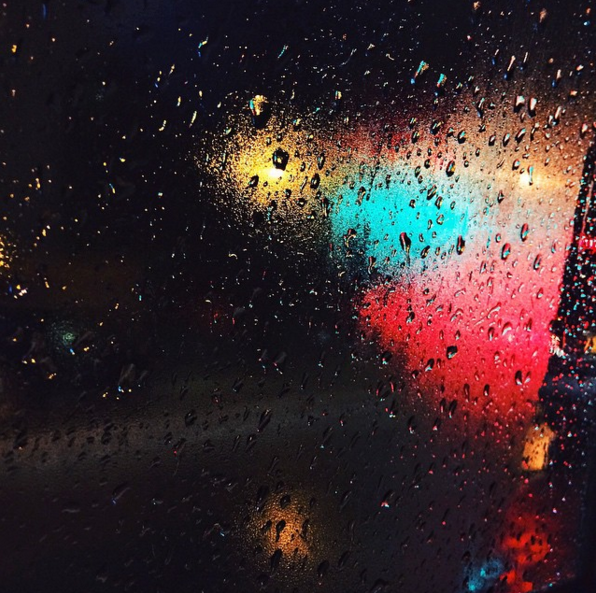
Silent crying comes in handy all the time: In bathroom stalls all through school; on pillows in the dark next to significant others when you fail to successfully disagree about something; funerals; cabs; standing in line at coffee shops; riding public transit. It’s never a perfect cover. As best I can tell by now the only way to appear as if you haven’t cried even after crying a lot is by wearing a shit-ton of makeup. Even when Kim Kardashian, or really any Kardashian, is bawling, there’s not a square centimeter of un-lacquered skin to betray her by turning red. Their whole faces are waterproof, and they daub away tears with a neatly folded tissue held taut against the undereye area.
Crying is literally the only thing we are born knowing how to do. We can’t eat, we can’t walk, we can’t talk, we can’t even see, but we can cry.
I taught myself this silent crying in my dad’s bathroom (it was where he kept his shaving stuff) when I was youngish, looking in the mirror, feeling ugly, sobbing away, chin crinkled by my contorted mouth. So I stopped, and I held the sobs in. It hurt my head, and hurt in the back of my throat, but it looked better, and it felt… not better, but less pathetic.
In her book Bossypants, Tina Fey described the “tri-annual cry,” where you hold it all together and compartmentalize and deny your feelings except for three instances a year, when you sob torrentially and nonspecifically, preferably alone and to no one. Usually my tri-annual cries were triggered by something relatively insignificant, and I rarely cried in the moment if anything was really wrong. My mom would try to wheedle feelings out of me only to wheel around and criticize. I preferred my dad’s approach, which was to engage only if it was possible to immediately deflect with humor. He still cared about us, in a dad way. He did all the cooking and grocery shopping in our house before my parents got divorced. When we would visit on weekends, he’d make me tuna melts and tomato soup. He’d make pot roast often, but I hated the taste and idea of the beer he used in it. He drank often, excessively.
I was working as a cashier at Best Buy two days before Christmas ten years ago when my older brother called on my cell phone; I ignored it. Then he called to the store, and his call was forwarded to the phone at my register. He told me to go somewhere quiet, where I would be alone, so he could call me again, privately.
A few minutes later I was losing my mind sobbing in one of the store’s bathroom stalls, banging the walls, almost screaming but finding nothing to meet the irredeemability of what had happened. Someone else came in — it was a public bathroom, more or less — and was probably overwhelmed by my breakdown. Are you ok? they asked.
Yes, I said, holding back. I’m fine.
Do you want me to get anyone? they asked.
No, I said through sobs, it’s alright.
My dad died before I could understand why, when I’d seen him in the parking lot outside my mom’s apartment just a couple of months previous, he fairly ran to hug me, like I’d been reported missing in action and presumed dead. We didn’t talk much during that semester, my first in college, though he called frequently. In a matter-of-fact way, I didn’t understand the calling. Before college I saw him frequently, but we never much talked, made a point of talking. It was the last time I’d seen him before we were supposed to get together for Christmas. Until a couple years ago, no family member could light up my phone without me being terrified, for a split second, that someone else was dead.
The worst part about someone dying is that they’re gone, but one of the also-bad parts is that you feel around for things to say and do and, maybe you’re just drained, but all you can grab onto is cliches. He was young, but only in the actuarial sense. We didn’t expect it. It came out of nowhere, sure. I just saw him, just talked to him, and he was fine.
And it’s in what you do, too: Like a Chicken Soup for the Soul avatar, I started shambling toward engaging with the emotional inner lives of people. I’m excited to deliver news to the world of something I learned. It’s that life isn’t a binary choice between holding everyone at a distance and becoming undone every time someone tells you their feelings, or you tell them theirs.
Who cares if cliches are sometimes true, honestly
You thought you were so clever
And yet you did the stupidest thing of all
You wasted time lording your superiority
Over facts of the human condition
You
Idiot.
There’s a cadence to the type of mistakes I make. My driving gets gradually sloppier until I have some kind of near-miss or I back into a telephone pole I completely didn’t see; I toss my phone casually on surfaces until one day it bounces off, hits the ground, and the screen shatters, and then I treat the new one like a newborn baby. Current me can never understand how past me traded so cavalierly on my time, finances, and psyche. Then current me slowly morphs into past me again, generally unaware of the consequences of actions and inactions. Sometimes pieces of learned lessons stick with me, but the broader arcs repeat. What you put your attention on thrives, and all that. Except. Now I equate feeling any peace with the fact and manner of my dad dying with an ominous loss of perspective. But if I am regressing, if I haven’t learned, there will always be more chances.
Photo by Casey Johnston
Save Yourself is the Awl’s farewell to 2015.
Prerogative
by Bijan Stephen

Blessings, freely given, are a quiet kind of responsibility. They share a bed with curses, and therefore lie very close to doom. But this is all another way to say that this year I set out to minimize regret, and that I mostly succeeded. I am proud of this because it feels like a feat: I kept my sense of shame. I did not start eating better, or exercising regularly. I have reason to believe my alcohol and cigarette intake may have increased. I am still stressed. I am still anxious. I am still hungover. There is no doubt in my mind, however, that I am healthier than ever because I have avoided doing more dumb shit than ever before; I am correspondingly less psychically burdened. I am aware that this may in fact be an elaborate rationalization.
Should you be interested in same, here is how I did it: I resolved, on January 1st, to make all of my decisions as a relatively entitled, relatively wealthy white male would — because acting is how, as a person of color, you begin to overcome the fear of asking for the things you deserve. I also decided to try and live with more empathy, to examine and control my knee-jerk emotional reactions and overreactions. I suppose some call the second part practicing mindfulness, but that seems needlessly sanctimonious and a bit too sweet — what I have is jury-rigged and altogether more precarious. To remain even-keeled is an act of faith, I’ve learned, because the condition of the water, a force of nature outside your control, matters as much as the condition of your ship or the quality of your navigation. That’s neither a blessing nor a curse: Every sailor is doomed regardless, which is why there’s glory in the choice to take to the sea in the first place. Anyway, I don’t know how to sail yet. Perhaps 2016 is the year I learn.
Photo by Karen Blaha
Extended
by Lindsay Robertson

On a 2006 episode of “30 Rock,” Liz Lemon said this:
You could put a long blonde wig on a ferret and it would look like Jessica Simpson.
I’ve thought about and tweeted this line so many times over the years, because in saying it, Tina Fey/Liz Lemon aptly described something every American woman knows about our culture. When it comes to the embodiment of beauty, long blonde hair is the fastest shortcut. And while I used to snicker at the C-list celebs who leaned hard on this method, one day last June, I woke up tired of judging and just wanting to be that ferret. That beautiful, lucky ferret.
Even though it was almost summer, my seasonal depression was still mystifyingly unshakeable, and I was desperate to find the one thing that would magically change my life and make me feel better. Enter: hair extensions.
According to email evidence, on June 10, 2015, I woke up with the idea that the only thing standing between myself and the joie de vivre I’d had just the autumn before was long, flowing, fake blonde hair. After a winter and spring of novelty seeking, trying to break myself out of a rut in more typical ways (doctor visits and blood work, a bucket-list road trip, inspirational podcasts aimed at male wantrepreneurs), I’d run out of ideas and turned to changing my physical appearance as a last resort, and fixing my chin-length, fine, curly/unruly, constantly-frizzy hair seemed like the fastest way to make a big change. (It had already been blonde for many years.) I could go on and on about how unlike me this whole plan was (the fake part more than the impulsive part), and how it mystified everyone in my life who found out about it, but it doesn’t really matter. I’ll own it.
And so it was that after less than an hour of online research and a quick poll of friends over IM (it turns out your friends will ALWAYS give an enthusiastic “Yes!!!” to a Crazy Hair Plan), I found myself at an extensions-only salon in the Flatiron district called RPZL (What “Rapunzel” would be on the NASDAQ), having human hair extensions painfully “clipped in” to my scalp.
Right now, you’re either like “Okay, go on, I guess” or “Clip-ins, are you insane?” So yes, clip-ins, and yes, I was insane. For the uninitiated, I was insane because clip-in hair extensions are extremely temporary. Technically, you’re not even supposed to sleep in them. They’re basically for weddings and other special occasions, or for people who are experts in extension application. But because this establishment offered a service where they would put them back in for you for free (plus tip) any time you wanted, and because I didn’t want to incur the cost, potential hair damage and very long-term commitment of more permanent extensions, somehow I convinced myself that unlike everyone else, I could sleep in them, and also that I would either go back to the Flatiron district three times per week indefinitely, or learn to put them in myself. After all, I had confirmed the existence of (though hadn’t watched) multiple YouTube tutorials! This was a whole new identity I was embarking upon, here, and I was ready to fully commit.
I emerged from the salon after two hours and $250 (the part that I regret the most!) with long, flowing, nearly waist-length beige-blonde mermaid hair. I immediately commenced a selfie photo shoot on the sidewalk outside, texting the photo to the aforementioned friends, who were all equally bemused, mystified, and overwhelmingly interested in this new development.
The next three days were a blur of joy and selfies. What I do know for sure is that, for those three days, I somehow managed to see almost every person I know in the New York metro area. (I know this because, ever since, I’ve often run into people who say upon seeing me, “Oh, what happened to your hair extensions?”) I went to a party and a picnic, where my friends stared at me, befuddled, shaking their heads. I bought all those long-hair accessories previously irrelevant to my life. I had a friend come over and braid it. I even got the extensions lightly cut in a salon for another $70. But mostly during those three days, I did something I didn’t usually do, which was…take selfies. Hundreds of selfies, none of which I posted digitally, because I must have, even in my deluded state, sensed the ridiculousness and temporary nature of The New Me. When I look back at those selfies now, I look so happy in them. “You’re happy because you feel pretty!” one friend said of the selfies, and she was right. (The blonde-wig-on-a-ferret trick was working on me!)
Everything was novel and fun and pretty-feeling until Day 3, when it was time to take the extensions out and wash my real hair. I paced around my living room, trying to pull them out, tears running down my face from the pain (they were REALLY IN THERE), ripping plenty of my real hair out in the process. But I was still hopeful that I could put them back in myself. (The lady at the extension place had, after all, given me a diagram of a human head with little “X”s over the general areas where each clip should go!) But I realized pretty quickly that, (misleading!) YouTube tutorials aside, it is almost impossible to put hair extensions on your own head. And I also knew that I was never going to go to the Flatiron district to get them put back in. I could have gone back and asked for the more expensive permanent extensions, but I thought of the sunk cost fallacy, cut my losses and gave up. I knew it was over. In defeat, exhausted, I texted friends a photo of the extensions in their messy pile on the floor. Just the photo. No text. It was finished.
That was the end of a six-month quest to find a panacea, a search for that magical lifestyle change (paleo?), diagnosis (hypothyroidism?), TED Talk (power poses!), missing nutrient (B12? magnesium?), literal trip (Denver to Santa Fe in a convertible!), metaphorical trip (therapeutic psilocybin in Woodstock), or, of course, purchase (meditation apps, keto test-strips, CRYSTALS) that, once undertaken or bought, was bound to be the One Weird Trick that jiggled my brain’s Etch-A-Sketch and reset me into the perfect being I mistakenly believed I was at some point in the past.
I forgot, as everyone does, and as I will again, that the things that actually work are almost never easy. Actual changes require work and effort and a jolt out of your comfort zone, because your comfort zone is, of course, actually a cauldron that brews unhappiness. None of the self-help books I’ve read say this, but all successful intentional lifestyle changes seem to have one thing in common, even if it’s temporary: unpleasantness. (If they didn’t, we would be doing them already!)
It’s mid-December and I haven’t been depressed since July (knocking wood!), but not because of a magical cure-all. Turns out, I didn’t need any fad diets or trips or purchases or makeovers. I just needed to — take a deep breath and prepare yourself for how much you’re going to hate this — take an indefinite break from alcohol. (Sorry.) The End.
Save Yourself is the Awl’s farewell to 2015.
New York City, December 21, 2015

★ The first light came on strong, skimming over the top of the shadowed city to set an airplane aglow high in the slate-blue west. By the end of breakfast, though, the sun was gone; seamed and folded clouds covered all. Stretch marks ran through them on opposing diagonals. Drowsy and confusing dimness prevailed. Again a chill clung to the office. For one moment in the afternoon there was a flush of sun, and then the clouds shut it off again. By 3:30 it might as well have been night. It was more comfortable to be out on the sidewalk, haggling with the Christmas tree vendor in the dark, than it had been to sit at the freezing desk by day.
Regrets of a Mommy Blogger
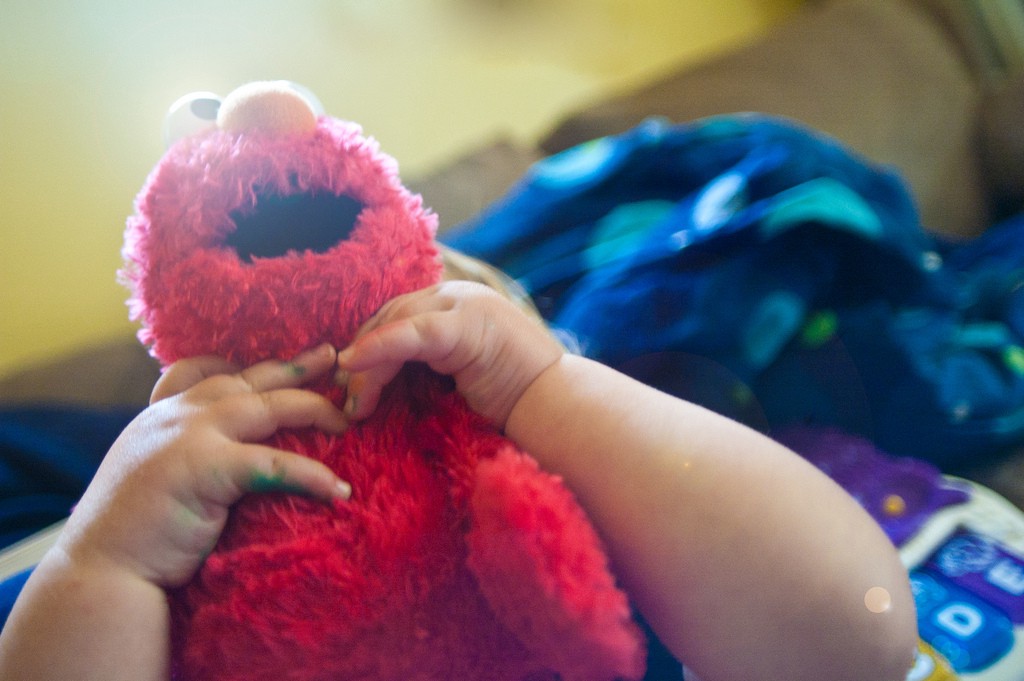
Being a first time parent is insane. We are encouraged to revel in our every whim, just like the baby we care for, screaming for things we don’t need. To accept every baseless fear as fact, to adhere to the logic of a Dr. Seuss character at best. To purchase every product as if it would stop our helpless child from dying helplessly in the dead of night. Every impulse — is the baby sick? Deranged? Breathing improperly? Getting enough protein? Too much (or not enough) exposure to brands? — all of this is indulged with unbridled sincerity and seriousness, as if we are the first parents to experience each bump in the long and endless road. This rash, it’s never been seen before in humans, surely. Every tooth springs fresh as if no other child ever got a tooth, and then another, until they have a mouth full of pearly whites with which to bite us.
For a brief moment, just a few weeks ago, I felt unexplained panic because my twenty-two-month-old daughter had learned about Elmo away from home. “Emmo!” she declared when faced with a print ad for organic toothpaste in a copy of US Weekly. I was floored. I never told her about Elmo. SHE DIDN’T GET THAT FROM ME, I proclaimed, proudly at first, my pride dwindling quickly as I realized that none of the other parents at her school were ashamed of their children’s knowledge of Elmo. In fact, at school, Elmo was just fine. Elmo was a favorite and beloved character. The other children knew about Elmo. It was only my daughter who had learned about Elmo second hand, away from home. I felt generic and sad — like a Whole Foods bin of granola — for a few minutes faced with her exuberance at the prospect of Elmo, the Brand, in front of the other parents. Here was my only spawn, so enamoured of Elmo, simply because she had never FUCKING SEEN HIM BEFORE. Here she was, child of mine, dazzled by a furry, red, brand. She didn’t have her own Elmo, so she had to search for him (or her?) in US Weekly ads. “Emmo!” “Emmo!” she sputtered from her dumbass, two-year-old mouth as I stood by, thinking of all the times I’d played Sonic Youth for her.
I felt inadequate. I had failed. I had failed to provide my daughter with the knowledge of Elmo, or of being too cool for Elmo, and now, all these basic ass fucking parents at her school knew it. I must run to Target and get her an Elmo. I must expose her to television. She doesn’t know a single brand. Is my daughter a loser? Why does she flip her lid when she sees Elmo? “Emmo.” “Emmoooo,” she cried as she slipped off to dream town for the night, leaving me in a misery of self-questioning. Everything I know is wrong.
Over the past year-and-a-half I have spent a lot of time writing about my experience of being a mother. I am, some might say, a Mommy Blogger. Mommy Bloggers receive a lot of email. However, I am not actually employed by The Awl, so, over the past-year-and-a-half, the editors of The Awl have received much mail on my behalf. It landed in their inbox, unasked for and unwanted. It was forwarded onto me, Laura, Mommy Blogger Extraordinaire. My only regret for 2015 is that I received this mail second hand, via forward. I wish it had come straight to me. I wish it had only sullied my own inbox, not the inboxes of the happily childless. Here is a tiny sampling of the subject lines of those emails from just the past few weeks. There are hundreds more. I feel no regret. I feel only anxiety because I haven’t responded to these emails.
1. Fwd: Give The Gift of Beauty for the Holidays
2. Fwd: 49 year old female doc unfreezes eggs to start family….
3. Fwd: No need for fear and frustration over fertility anymore with TempCue
4. Fwd: Do These Pills Make Me Look Fat? Antibiotics, Obesity and Other Negative Effects
5. Fwd: It’s like deodorant for your clothes
6. Fwd: Holiday Conversation Starters: What to Talk about Besides “Pass the Turkey!”
7. Fwd: Article: Five Tips for a Happy and Healthy Plant-Based Thanksgiving
8. Fwd: Limited Edition Holiday Product
9. Fwd: Show Your Gratitude, by Giving H.O.P.E.
10. Fwd: Delicious Simple Green Smoothie Recipes for Glowing Skin, Stronger Nails & A Younger You
11. Fwd: Home or Away for the Holidays…Bring Your Mobile Devices!
12. Fwd: Boost Your Brain to Get Through the Busy Holiday Season
13. Fwd: The Cooking Essential that Will Make Your Life Easier This Thanksgiving
14. Fwd: MEDIA INVITE: Jane Lynch and Matthew Morrison for Febreze
15. Fwd: How to MAINTAIN HAPPINESS during the Holidays
16. Fwd: Story Idea — Tips for Purchasing A Drone This Holiday Season
17. Fwd: Feat/Int: “The War Comes Home” Struggles and Heartbreak for Military Families
18. Fwd: Edible Stocking Stuffers
19. Fwd: Recipe: Pumpkin Pie Tamales
20. Fwd: Healthy Halloween Treats
21. Fwd: Timely — National Sandwich Day
22. Fwd: Food Story: Halloween Treat Ideas Without Scary Ingredients
23. Fwd: Story: Cure one family holiday fight before it starts
24. Fwd: HOLIDAY STORY IDEA: Modern Day De-Stressor… Your Dog
25. Fwd: Follow Up: No More Holiday Stress: Author & Coach Talks Tips on How Not to Lose Your Mind
26. Fwd: URGENT CANCELLATION: KOHLS HOLIDAY GIFTING TRUCK
27. Fwd: Follow Up: Item? Claire Coffee, Star of NBC’s Hit Drama Grimm, Talks Natural Birth & Breastfeeding in Exclusive Interview
28. Fwd: Last chance to RSVP
29. Fwd: You’re Invited To Cuties’ Snack Time Sweetness Twitter Party
30. Fwd: Fun gift for parents & grandparents: What kids say about God
31. Fwd: New Children’s Book Speaks on Self-Esteem
32. Fwd: New Year resolution for education: “Every child succeeds”
33. Fwd: [Parenting Pitch] Sponsored Posts + Giveaway Opp
34. Fwd: Creating confident readers
35. Fwd: WINTER BREAK: Expert Tips to Re-energize Students & Inspire a Strong Second Semester
36. Fwd: Story: App takes Santa’s Elf is watching to a whole new level
37. Fwd: Simplifying the Home, Even with Young Ones
38. Fwd: Timely-Why Vitamin D for kids?
39. Fwd: Expert Unveils Most Important Thing You Can Do to Help Your Child Succeed
40. Fwd: Timely for Vitamin D Day
41. Fwd: Perfect gift for baby!
42. Fwd: Do New Yorkers Have the Most Healthy Smiles?
43. Fwd: The Happy Kid Handbook (Tarcher/Penguin; Oct. 20, 2015)
44. Fwd: Mindful Parenting Event
45. Fwd: Timely- busy moms & holidays
46. Fwd: Chat w/ Unconventional Mom on Hilariously Honest New Book
47. Fwd: 56% Say It’s Okay To Discipline Someone Else’s Child
48. Fwd: NETFLIX Tween Star, Shares Personal Cyberbullying Story!
49. Fwd: Talking to Your College Student: Now, The Expert on Everything
50. Fwd: Former Celebrity Wife Writes to Help Kids of Divorce
51. Fwd: 17 year old Entrepreneur Story Idea
52. Fwd: Feat/Int: “From Divorce to Discovery: The Path to Ultimate Happiness”
53. Fwd: Steven Berzner Implements Collaborative Law Strategies To Help Couples Going Through Divorce
54. Fwd: Marriage, Baby…Will?
55. Fwd: Safety in Schools: What Will it Take?
56. Fwd: Life-Saving Family First-Aid Product Instantly Stops Even Severe Bleeding
57. Cyber MOMday: Special offers to thank the Moms who do it all!

Since finishing this draft several days ago, I have received more emails. And here is where we end 2015.
58. Fwd: Physical Dangers of Being Ungrateful This Holiday Season
59. Fwd: Freeze Sperm without Leaving your House
60. Fwd: Doc’s on Placenta Eating
Photo by David Goehring
Save Yourself is the Awl’s farewell to 2015.
Burying Rdio, the Music App for Annoying Men
by Kevin Nguyen
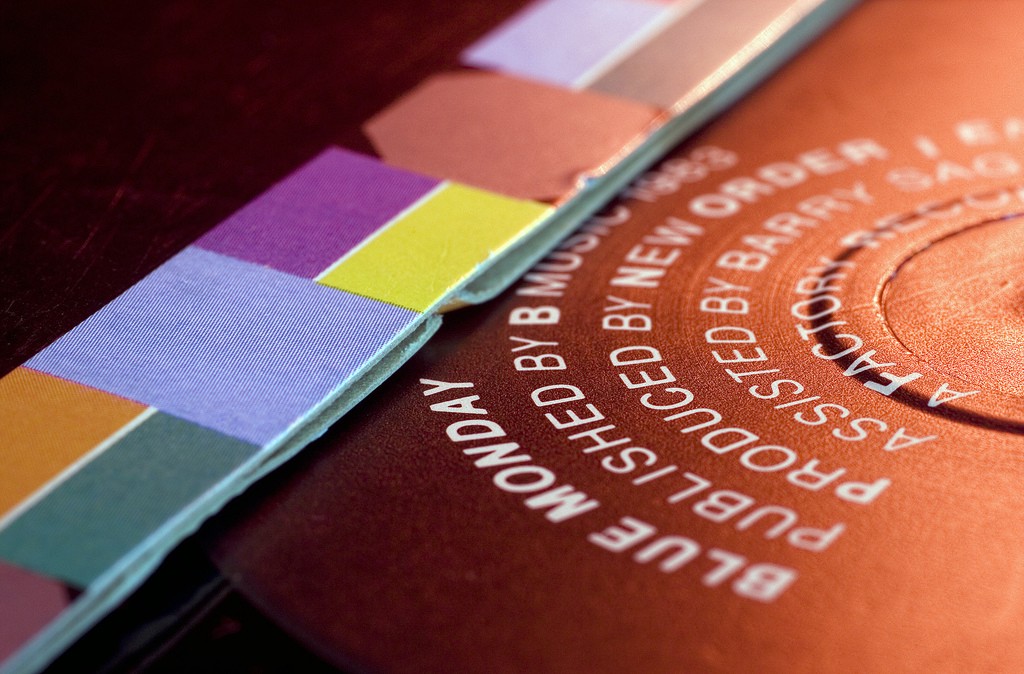
Last month, the streaming music service Rdio filed for bankruptcy and announced that its assets were being purchased by Pandora. Today, it’s shutting down, which means that after half a decade, I have to find a new way to listen to music. According to Rdio’s final farewell, I’ve clocked over five thousand hours of listening time (most of which was fittingly spent on Sky Ferreira’s “Everything Is Embarrassing”). A meager set of export tools allowed me to download the dozens of playlists I’ve created over the past half decade; in 2015, you can spend two hundred days of your life doing something and have just a handful of messy CSVs to show for it.
If Rdio had a moment, it was in 2010, when it launched. It was the first mobile-centric streaming service — ahead of Spotify by months. And, even after Spotify landed on U.S. shores, it was clear that Rdio’s product — aesthetically and functionally — was far better. Early adopter excitement dies out fast, though. Rdio was unabashedly the streaming service built for pretentious people, the music subscription for the intersection of people interested in nicely designed apps and Pitchfork. The bland language of UX — “clean” and “minimalist” — was ascribed to every mention of Rdio, which also maintained a traditional focus on albums, rather than songs and playlists. Even the company’s former design lead, Wilson Miner, admits that the service was made for “snobby album purists.”
After the shutdown was announced, there was a small outpouring among the community of terrible people who’d used Rdio from the beginning — like me. For years, I evangelized Rdio as the best of all the streaming music platforms, long after that was no longer true. These conversations often started by explaining, actually, it’s pronounced AR-dee-oh. Yet when people would ask me what made Rdio better than Spotify, I never really had a good answer. “It’s clean and… minimalist…” I’d say, as if I were describing a fancy bathroom.
Recently, a friend who is close with some of Rdio’s founders told me that the service was designed to be a social music app. In the five years that I used Rdio, this never occurred to me. Rdio has never boasted more than the most basic social features — a Twitter-like, one-way follow structure, some small hints about what your friends had listened to. But really, Rdio never felt social because not that many people ever used it: At its peak, it was rumored to have just shy of a hundred thousand paying users, well below Spotify’s twenty million.
But Rdio was the most social music service in as far as it was the most exclusive; you joined Rdio instead of Spotify because you wanted to be among a certain kind of music listener. And like almost all exclusive things, it tended to be a boys’ club. Whether or not it’s reflective of the service’s larger demographics, Rdio’s biggest fans tend to be loud men on Twitter. The only people I ever see defend Rdio are the kinds of men who love graphic-designer-turned-downtempo-artist Tycho, who lament the decline of Apple design since Steve Jobs died, and who brag about using Slack for fun. (Again, me).
There is nothing necessarily male-centric about Rdio’s design, nor do I think it was meant to appeal strictly to men. But as with many communities built around some notions of exclusivity, Rdio was most attractive to a group of people who have historically never been excluded. As the streaming music business became more competitive, this would be Rdio’s biggest failing — exclusivity even pervaded the company’s business decisions. The company focused on curation and library management tools, as if its platonic ideal of a user remained a person who used Rdio as if they were sorting their vinyl collection. And for a long time, Rdio only offered a paid subscription, while Spotify flourished by offering a limited free subscription that was subsidized by advertising.
Even after Rdio introduced a free plan, it failed to differentiate itself. The company attempted to course correct, badly: Later product features the company introduced focused on discovery through personalized radio stations, poorly mimicking long-running features that Pandora and iHeartRadio were already leaps and bounds ahead on. The company struck an ill-fated deal with Cumulus for ad-supported radio in exchange for equity in Rdio which, two years later, turned into a $19 million write down. Each subsequent redesign that refocused the service on “stations” failed to appeal to existing users or attract new ones — perhaps what you’d expect from a company named after a vowel-deficient deliberate misspelling of “radio.”
When Condé Nast acquired Pitchfork this fall, Fred Santarpia, the company’s chief digital officer, said the acquisition brought “a very passionate roster of millennial males into our roster.” The quote drew an appropriate amount of ire from readers and music writers, who found it to be an offensively exclusionary way to describe Pitchfork’s readership. While Santarpia isn’t necessarily wrong — QuantCast pegs Pitchfork’s readership at eighty-two percent male, over half of whom are between eighteen and thirty-four years old — he is definitely out of touch. It seems short-sighted (and tone-deaf) to think only of the audience you already have, rather than building something for the bigger one that you could have. If Condé Nast worked to raise Pitchfork readership to half women, its audience would grow by sixty percent. In a roundup of responses of Pitchfork’s female contributors, Sara Sherr asked, “Even if this guy was talking business demographics, why aren’t women seen as a viable market in 2015? And why doesn’t he realize that this could alienate potential readers and advertisers?”
After I downloaded all my Rdio playlists, I uploaded them into a fresh Spotify account. Using the desktop app’s follow feature, I discovered that six hundred and eighty-six friends had Spotify accounts — thirteen times the number of people I knew on Rdio. Every December since I’d been on Rdio, I had a ritual where I’d make a playlist of my favorite songs of the year. No one ever really listened to them. This year, I know enough people that somebody might.
I’ll miss Rdio as much as someone can reasonably miss an app. But I’ll take comfort that in saying goodbye to Rdio, I’m also leaving behind the idea that music discovery is something made exclusively for dudes.
Photo by dennis brekke
Save Yourself is the Awl’s farewell to 2015.
